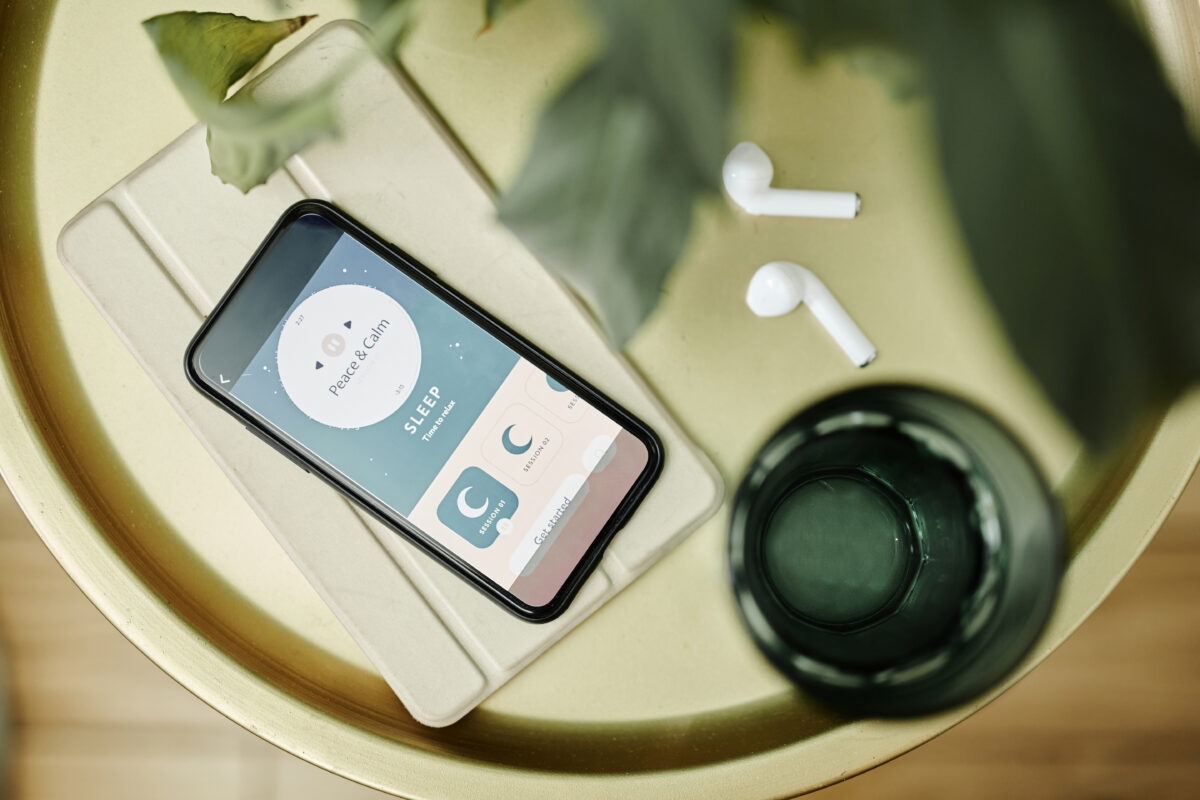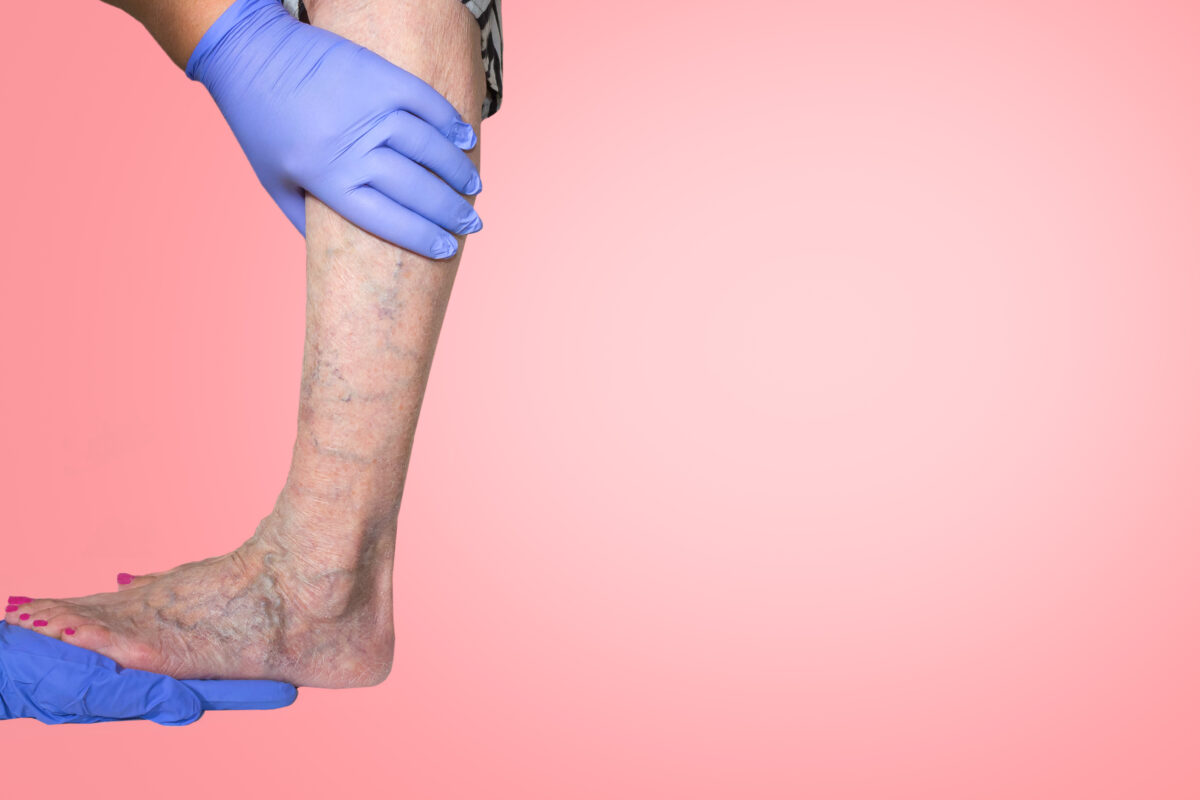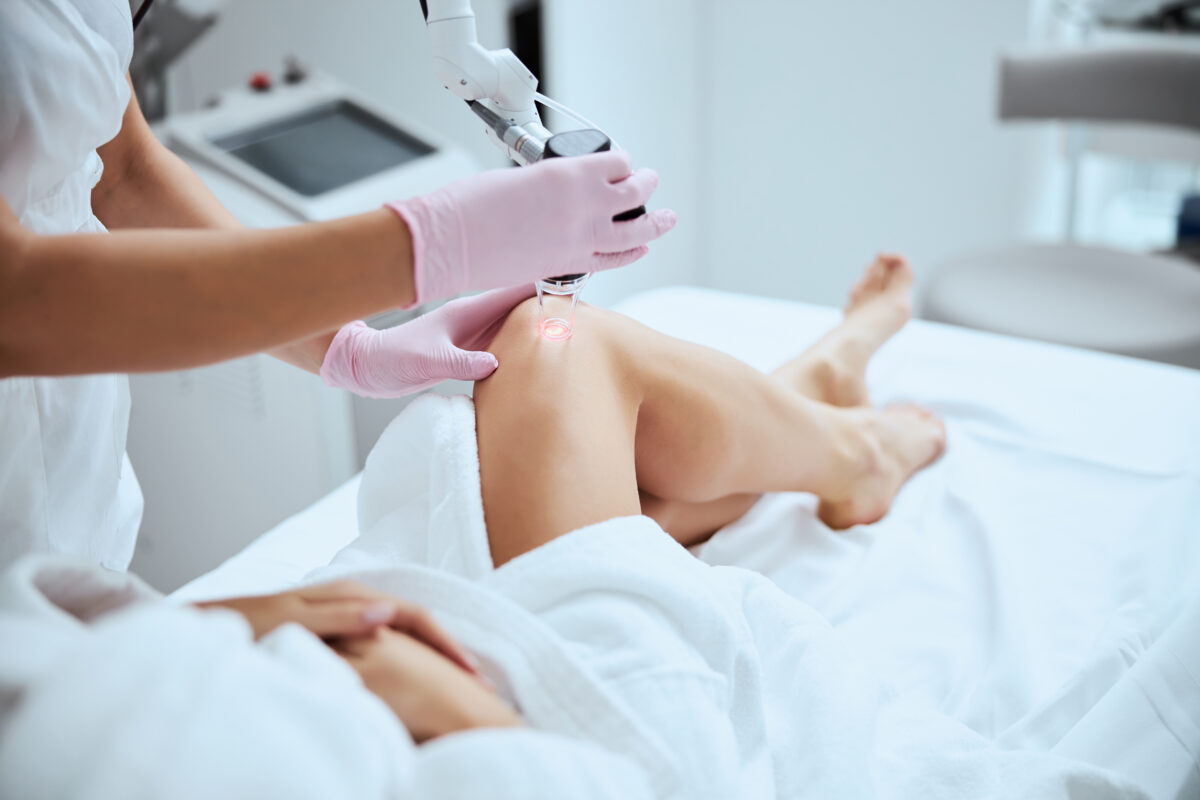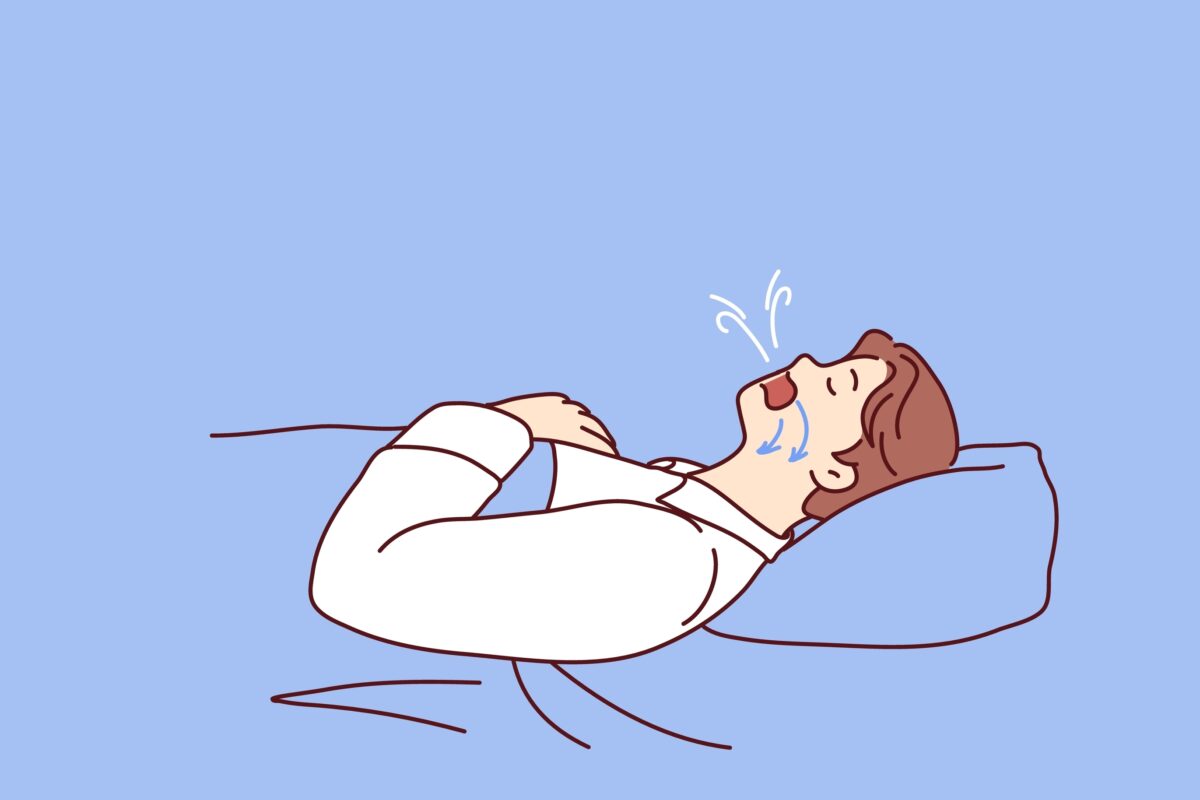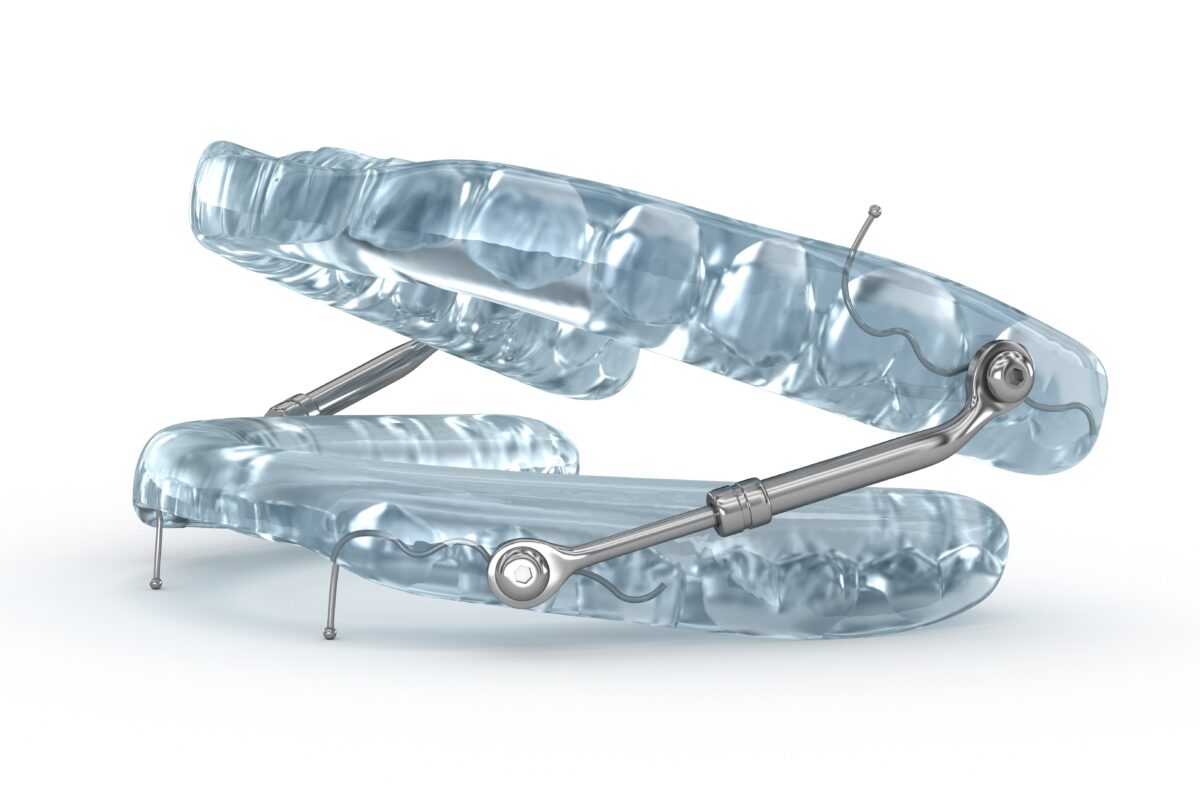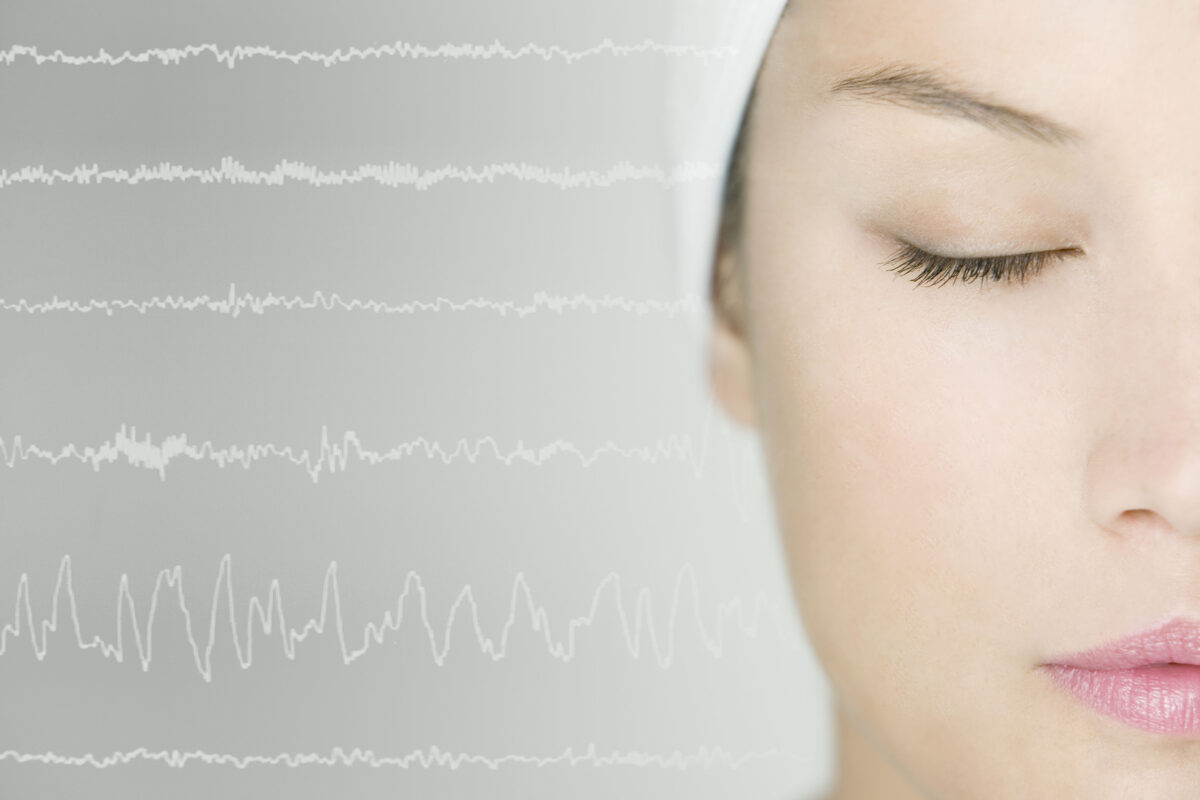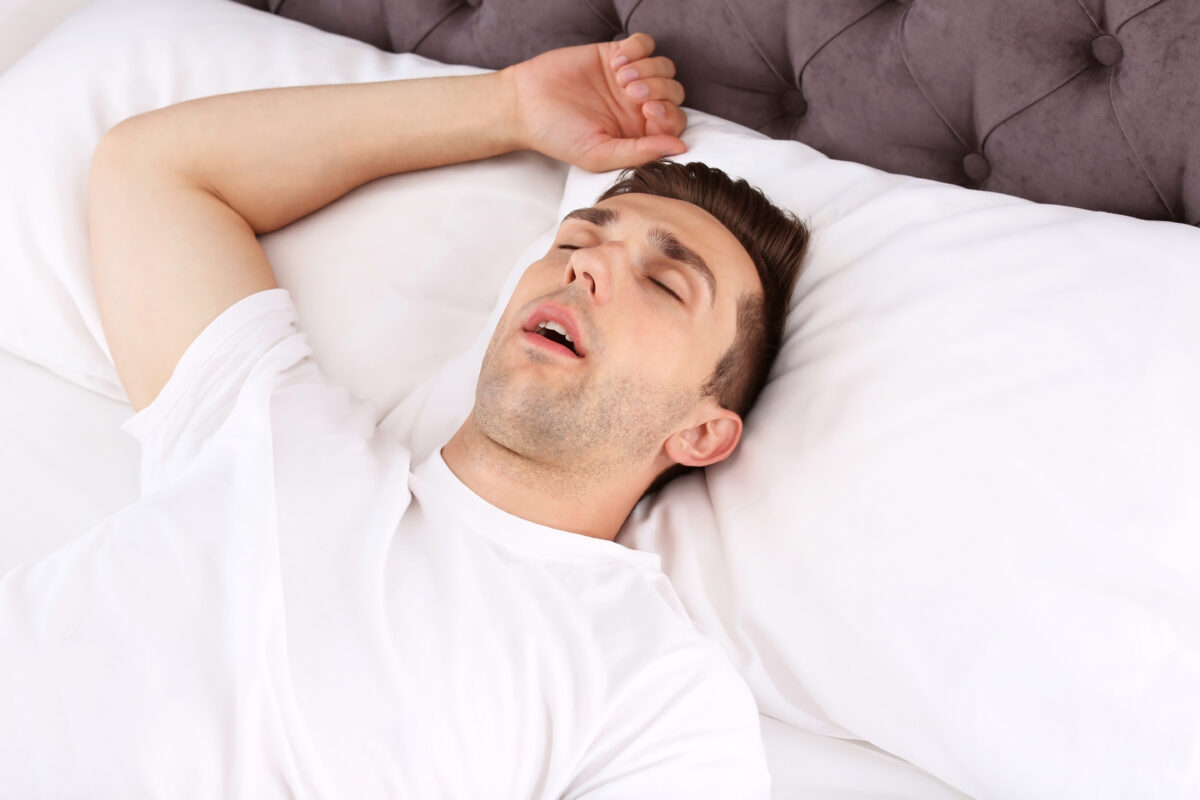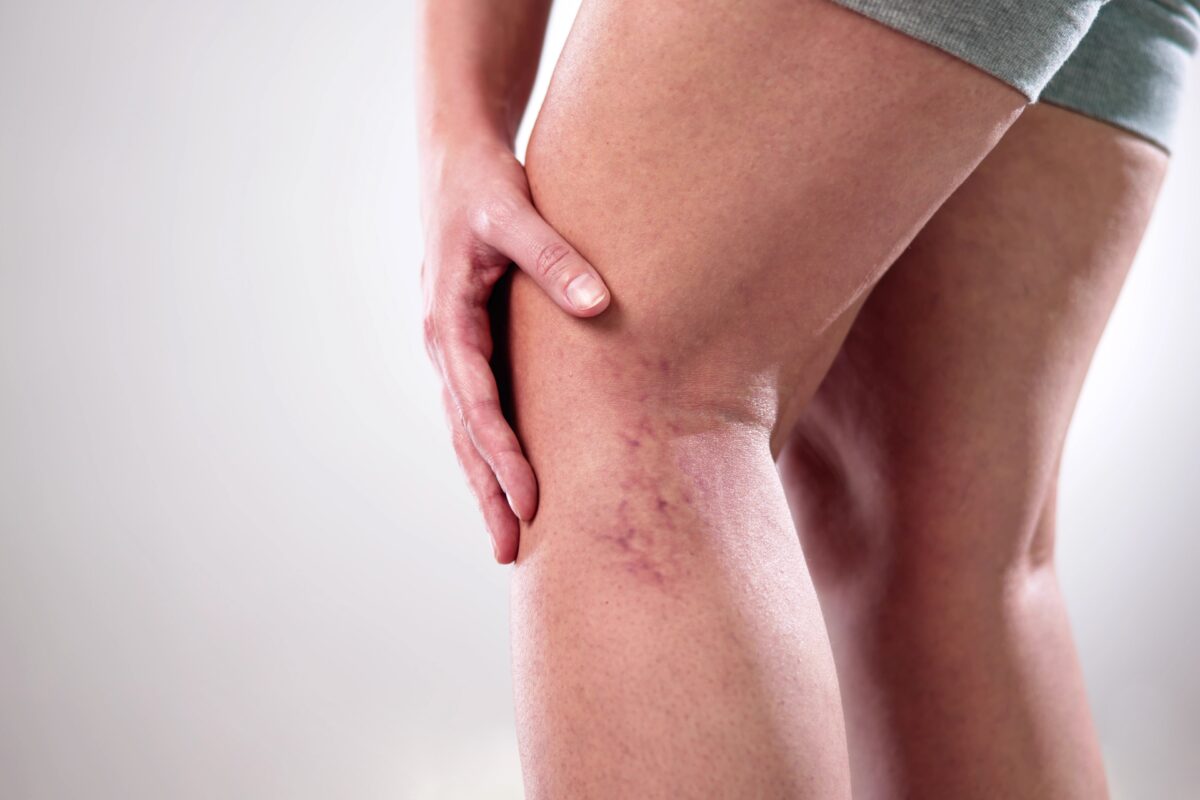Historically, those suffering from Obstructive Sleep Apnea have relied on an in-laboratory Polysomnography (PSG) versus a home sleep test. This comprehensive assessment is conducted overnight in a specialized sleep center where specialists monitor multiple physiological signals, including brain waves, eye movements, muscle activity, heart rhythm, airflow, respiratory effort, and blood oxygen saturation – the traditional gold standard.
However, in-lab tests present practical challenges. They can be expensive, access may be limited by geographic location or long waiting lists, and the unfamiliar environment can be uncomfortable or disruptive for patients, potentially leading to a first-night effect where sleep differs from typical patterns at home. That’s why Home Sleep Apnea Testing (HST) has emerged, also known as out-of-center sleep testing.
Home tests have been propelled by advancements in sensor technology, data processing, and a growing need for more accessible and cost-effective diagnostic solutions, particularly for uncomplicated cases of OSA. The increasing adoption of HST is not solely a product of technological innovation. It aligns with broader health care trends emphasizing decentralized care models and patient preference.
A significant number of undiagnosed OSA cases also necessitates scalable solutions that go beyond your traditional sleep lab. However, while HST significantly improves accessibility, it also introduces some complexities. Your sleep apnea doctor or pain management specialist can answer all your questions.
Our examination herein provides an expert-level analysis comparing older generations of HST devices with modern counterparts. We’ll discuss their technological evolution, differences in capabilities including accuracy and data interpretation, explore key trends shaping the field, incorporate patient perspectives, and address common questions faced by adults researching these options.
Above all, we’ll provide you a comprehensive understanding of the HST landscape for patients seeking informed decisions about their sleep apnea diagnosis.
Early Generations of Home Sleep Test Technology
The conceptual groundwork for your typical home sleep test was laid in the mid-to-late 1980s, spurred by clinical interest in ambulatory monitoring of arterial oxygen saturation. The 1990s saw a growing awareness of Obstructive Sleep Apnea’s high prevalence and health consequences, intensifying the search for alternative methods to expedite testing for a larger patient population.
Early HST devices were often strikingly primitive. Many were bulky and heavy, comparable in size to large portable cassette players. Data acquisition relied on methods like eight-channel cassette tapes, which limited sleep-recording duration and required cumbersome processes for data retrieval and quality checks.
They even sometimes involved a connection to traditional pen-and-paper Polysomnography systems. These devices had manual switches and gates, making the process prone to user error and potential data loss if any steps were missed.
Parameters measured by these early gadgets were limited, sometimes capturing only snoring. Capabilities eventually included pulse rate monitoring, oral airflow, respiratory functions, and body position tools.
These devices typically aligned with the American Academy of Sleep Medicine’s 1994 classification system as Type III or Type IV monitors. From a user perspective, these early HSTs were far from intuitive. The complexity of this equipment was oftentimes begging for a technician, even for home use.
Patients needed to be diligent and technically adept correctly attach sensors, operating the interface. But the success rate was usually lower than desired.
Clinically, early HSTs were often employed not as primary tools but rather to confirm a diagnosis in patients already deemed highly likely to have OSA based on clinical assessment. Their use was hampered by a limited depth of data compared to PSG, as well as the lack of electroencephalogram sensors. These devices could never directly measure sleep stages or determine total sleep time, which doctors need to accurately calculate apnea and hypoxia.
The Modern Era: Advanced Features and Capabilities
The home sleep test landscape has transformed since the early 2010s. A pivotal moment was when HST test users started getting reimbursed by the Centers for Medicare and Medicaid Services in 2008, which boosted adoption and spurred technological development.
Today, HST is utilized for the initial diagnosis of Obstructive Sleep Apnea in the right patients, moving beyond its earlier role of merely confirming OSA. Dramatic improvements enabled this shift in technology, alongside factors such as cost-effectiveness, better access, and higher patient acceptance.
Modern HST devices bear little resemblance to their predecessors. Miniaturization is a defining trend, with many devices now being small, lightweight, and wearable – taking forms such as finger-worn sensors, rings, adhesive patches, wrist-worn devices often combined with finger probes, or small body-worn units.
Improvements have mostly focused on the user experience. Modern devices feature intuitive interfaces with clear icons, simplified connections, status indicator lights, and sometimes touchscreens, making patient setup easier and less prone to error.
Wireless connectivity via Bluetooth is common, allowing you to see data on your phone or computer for setup, monitoring, and uploading information. Smartphone apps play a central role, providing setup guidance, allowing users to view data summaries and facilitate data to health care providers. Some innovative apps even leverage your phone’s internal microphone and sensors to perform sleep apnea screening or detection.
Data storage has also improved, with devices typically having internal memory capable of storing multiple nights of recording, as well as extended battery life allowing for multi-night studies. Disposable HST options have also improved user convenience by eliminating the need for returning a device for cleaning.
Home Sleep Test Sensor Sophistication
The range and sophistication of sensors used in modern home sleep test devices have expanded considerably. While many still fall under the Type III or Type IV classifications, the quality and types of signals measured are extremely advanced.
- Respiratory Inductance Plethysmography (RIP) belts: These chest and abdomen belts offer more reliable effort signals than older piezo belts.
- Peripheral Arterial Tonometry (PAT): These are measured typically from a finger probe, assessing autonomic nervous system responses and vascular tone changes related to respiratory events and arousals. They provide an alternative way of estimating respiratory disturbances and sleep stages.
- Actigraphy: Using accelerometers, measurements on movement can help estimate your sleep-wake periods. Wearables like smartwatches and rings measure blood volume changes optically and can derive your heart rate, heart rate variability, and sometimes estimate respiratory patterns.
- Acoustic sensors: These are placed on your neck or chest to analyze breathing sounds and snoring patterns.
Some advanced HST systems are incorporating limited heart-monitoring channels, attempting to directly measure sleep stages and arousals. Also, an important development in modern HST is the integration of artificial intelligence and machine learning algorithms. They process the complex datasets generated by sensors, automating the scoring of respiratory events and estimating sleep stages from signals
All of this can improve diagnostic efficiency and accuracy. Overall, the modern HST era is one of usability, comfort, data acquisition capabilities, and analytical sophistication compared to earlier generations.
While challenges remain – particularly regarding accuracy in certain populations – today’s technological advancements have made HST a widely used tool in the diagnosis of OSA for many patients.
Convergence of Advancements and Tech
This convergence of these home sleep test advancements has collectively driven the evolution of HST. It wasn’t a single breakthrough but rather a synergistic interplay of factors that shaped things.
Despite these breakthroughs, a fundamental challenge persists for many HST devices with respect to measuring sleep stages and determining total sleep time. The same precision as in-lab tests is still being perfected over the long run. Fortunately, HSTs that have limited electroencephalogram channels represent an effort to bridge this gap.
The following table summarizes major differences between older-versus-modern HSTs:
| Feature Dimension | Older HSTs (Pre-2010s) | Modern HSTs (Post-2010s) |
| Typical Device Type | Primarily Type III / Type IV | Primarily Type III / Type IV, some with advanced features approaching Type II |
| Size/Form Factor | Bulky, heavy | Miniaturized, lightweight, often wearable (rings, patches, finger sensors) |
| Data Storage/Transmission | Cassette tapes, limited internal memory | Internal memory (multi-night), wireless (Bluetooth), cloud upload, smartphone sync |
| User Interface/Setup | Clunky, manual switches, error-prone | Intuitive icons, indicator lights, fewer connections, apps for guidance, easier setup |
| Measured Parameters (Common) | Airflow, Effort (often single/piezo), SpO2, HR, Position (later models) | Airflow, Effort (often RIP), SpO2, HR, Position, Snoring; plus PAT, Actigraphy, PPG |
| Advanced Sensors | Generally absent | PAT, Actigraphy, PPG, Acoustics, Mandibular Movement, sometimes limited EEG/EOG/EMG |
| Wireless/Smartphone Integration | None | Common (Bluetooth, dedicated apps) |
| AI/ML Use | None | Increasingly used for scoring, analysis, sleep estimation |
| Typical Use Case | Confirmation in high-probability cases | Initial diagnosis in appropriate patients |
| Patient Comfort/Ease of Use | Lower; often cumbersome, complex | Significantly higher; more comfortable, simpler setup |
| Technical Success Rate | Lower (approx. 70-80%) | Higher (often >90% reported, though user error still possible) |
Home Sleep Test Performance Reaching the Gold Standard
Evaluating the convenience and technology in any home sleep test involves comparing its performance against the established gold standard, in-lab test across several dimensions. This includes accuracy, reliability, the depth of data provided, and the ease of use for any patient.
In-laboratory, attended polysomnography, or PSG Type I, remains the undisputed high standard for diagnosing sleep-disordered breathing and other sleep disorders.
“Home sleep apnea testing is an accepted and less costly alternative in adult patients presenting with signs and symptoms indicating an increased risk of moderate to severe disease and no significant comorbidities,” according to Sleep, a journal published by the Sleep Research Society. “However, despite its accessibility and comfort, standard HSAT without electro-encephalogram (EEG) tends to overestimate total sleep time (TST) and subsequently dilute apnea–hypopnea index (AHI) scores by misinterpreting wakefulness as sleep, particularly in patients with fragmented sleep.”
Older generation HSTs were generally considered less accurate than PSG and often less accurate than modern HSTs. Their use was often restricted to confirming OSA in patients with a very high pre-test probability, acknowledging their limitations in sensitivity, particularly for milder disease.
Thankfully, modern HSTs have demonstrated improved accuracy, particularly for diagnosing moderate to severe OSA in uncomplicated adult patients – those without significant comorbidities or suspicion of other sleep disorders. Some modern devices, utilizing advanced sensors and algorithms, have shown high levels of agreement with PSG in validation studies.
Evaluating HST Studies: Validation and Accuracy
Many home sleep test validation studies emphasize high correlation coefficients. However, a high correlation merely indicates that two measures tend to move together. It doesn’t guarantee that they yield similar values or lead to the same diagnostic classification.
This is why an HSAT could consistently underestimate or overestimate a traditional in-lab test, yet still show a strong mathematical correlation. It’s a reliance on correlation that can be misleading. For instance, the historical focus on correlation might have created an optimistic perception of home tests equivalent to in-lab tests in some earlier assessments, influencing adoption patterns and clinical confidence.
Nonetheless, in terms of reliability, modern HSTs generally outperform older devices. However, ensuring the technical adequacy of the recording through device design, clear patient instructions, and potentially post-test quality checks is key.
“Sleep scientists always have been intrigued by the possibility of gathering more accurate sleep data by monitoring subjects in their accustomed bedroom environment at home rather than in the unfamiliar confines of the sleep lab,” according to Sleep Review Magazine and the American Academy of Sleep Medicine. “In the 1990s, there arose a greater awareness of both the high prevalence of Obstructive Sleep Apnea and the severe health consequences of untreated OSA, which created a greater sense of urgency to develop alternative, cost-effective methods to expedite diagnostic testing for more patients.”
Patient Comfort and Usability of the Home Sleep Test
Patient comfort and ease of use are major advantages driving the adoption of your typical home sleep test. Early-generation devices were often perceived as uncomfortable due to their size, weight, and the number of wires and belts required for connection. At first, the setup was complex and non-intuitive.
Today’s HSTs are a vast improvement. They are significantly smaller, lighter, and often use wireless sensors, reducing yesterday’s tangle of cables. Setup procedures are simple, with clear video instructions, fewer connection points, and user-friendly interfaces. Patients love the comfort and simplicity of these devices.
Remember that conducting a test in the familiar environment of your own bed is more comfortable and convenient compared to spending a night in a sleep laboratory. Just know that while devices are simpler, the responsibility for correct sensor application still rests with you. Furthermore, while adding more sensors can increase the diagnostic information obtained, it might slightly reduce the comfort advantage.
Huge improvements in usability for modern HSTs are not merely about patient preference – they directly improve the reliability of the test. By minimizing the likelihood of user error during setup and application, these design changes make sure that the collected data is technically adequate for interpretation, addressing the vulnerability of unattended monitoring.
The Facts and Stats Behind Convenience
Between 60 and 70 percent of home sleep test diagnostics are now conducted at home. By conducting the test at home, your sleeping environment resembles your usual sleeping conditions.
Also:
- It’s cheaper than in-lab examinations. This is particularly beneficial if you don’t have insurance coverage.
- At-home sleep apnea tests typically involve simple sensor attachment. This makes them easy to use, even for patients unfamiliar with medical devices.
- Home sleep apnea tests are considered highly accurate. Diagnosing Obstructive Sleep Apnea, or OSA, in appropriate candidates is pivotal for your future health.
“All at-home sleep tests diagnose sleep apnea based on the measurements of factors including your breathing, blood oxygen levels, airflow and heart rate,” states CNET. “The list of specific measurements will vary by the device you choose. Before you can buy or rent an at-home sleep test, your doctor must determine whether you fit the criteria for having a high probability of sleep apnea.”
Wellness and Pain
Personalize your home sleep test experience by visiting Wellness and Pain. We offer conservative treatments, routine visits, and minimally invasive quick-recovery procedures. We can keep you free of problems by providing lifestyle education and home care advice.
This enables you to avoid and manage issues, quickly relieving your inhibiting lifestyle conditions when complications arise. We personalize patient care plans based on each patient’s condition and unique circumstances. Wellness and Pain can help improve wellness, increase mobility, relieve pain, and enhance your mental space and overall health.


